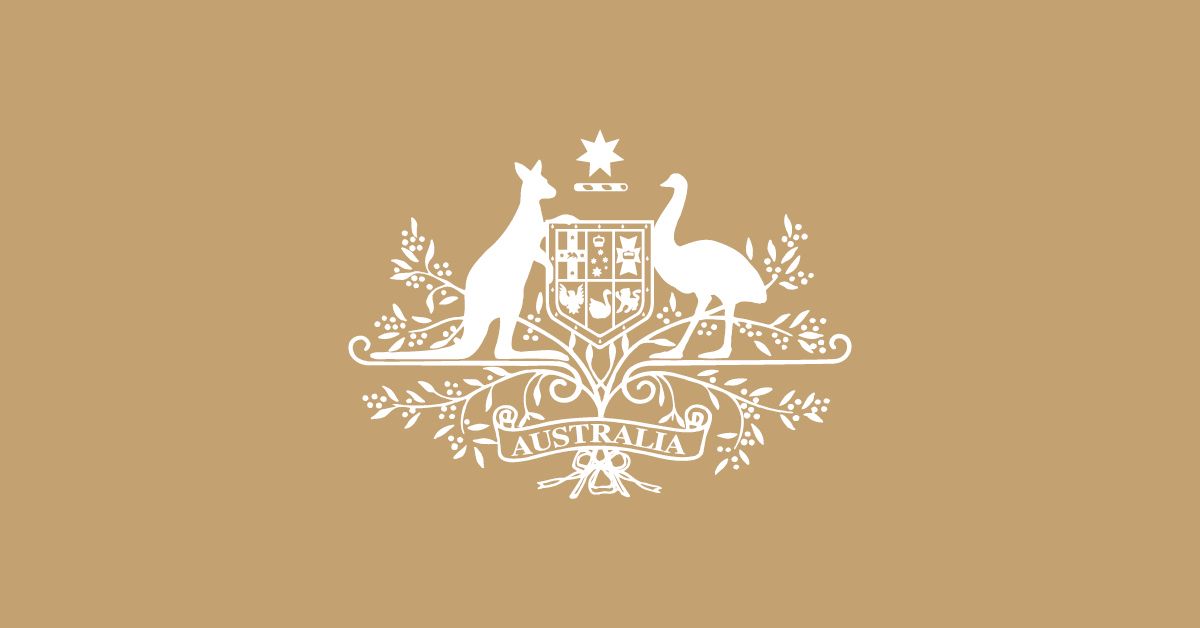
Australian Education Union annual federal conference
When I was here last year, I talked about the first thing I did when I got this job.
I went back to my old primary school and gave my teacher Mrs Fry a hug.
I did that for a reason. It felt like the right place to start.
But I also wanted to send a message.
A message about what I think is important. About who I think are important. About the sort of minister I want to be.
I hope now, through the things I’ve done, and the things I’m trying to do, that you can see, I mean it.
Now that school’s back, I know you can also see there just aren’t enough Mrs Frys.
When I was here, last year, I called it a crisis. And it’s still a crisis. The truth is, it’s been a crisis for years.
The difference is, now you have a Minister who’s prepared to call it what it is, and work with my State and Territory colleagues to do something about it.
There is not one single fix but pay is part of it.
And what’s happened in New South Wales and South Australia in the last 12 months is important.
The starting salary for a teacher in NSW straight out of university is now $85,000.
The tax cuts the Prime Minister announced a few weeks ago mean that same teacher will get a $1,804 tax cut from 1 July.
About double what they would have got under the Liberals.
But money is just one part of it.
I know that workload is a big part of it too.
You have heard me make the point a number of times, this isn’t the sort of job that starts at 9 and finishes at 3 and I know lot of teachers are burnt out.
States are doing some good things here, but the next National School Funding Agreement is an opportunity to make sure we provide more teachers with more support and the sort of resources they need.
Building and keeping the teaching workforce we need also requires something that doesn’t cost anything, and that’s respect.
You will never hear me say teachers are duds like the last mob did. You will only hear the reverse.
That’s what the ‘Be That Teacher’ campaign is all about.
And I hope you can see in that campaign, if you have seen it, the same thing that drove me back to Cabramatta Public School and Mrs Fry when I got this job.
And that’s respect.
And a lot of people have seen that campaign. 50 million views so far.
I also know that’s not enough.
If we are going to rebuild our teaching workforce, we need that and more.
That’s why our new Commonwealth Teaching Scholarships are important.
They are worth up to $40,000 a pop.
Real money that helps pay the bills through uni.
And at the end of it there is a requirement.
In return for the money there is a requirement that you teach in a public school for up to four years.
Applications opened late last year. And I can tell you we have got about three applications for every scholarship available.
We also have to make some real improvements to the course at uni.
At the moment only about 54 per cent who start a teaching degree finish it.
That is lower than other university courses.
And most of those who do finish, tell me they don’t feel really ready or prepared for the classroom when they finish their degree.
That’s what is driving the reforms I announced last year to initial teacher education.
Improving prac has got to be part of this too.
On Sunday I’ll release the Universities Accord Final Report.
It’s a blueprint for how we reform higher education, over the next decade and beyond.
And one of the things it talks about is the financial burden of mandatory unpaid work placements. What it calls placement poverty.
And what it recommends is paid prac.
Financial support for nursing students, for social work students, for early education students and for teaching students.
That’s a quick update on the teacher shortage crisis.
There is a lot happening.
Something else we’ve got to do is fix is how we fund our schools.
You’ve heard me talk about this a lot.
If I told you we have the best education system in the world you would probably think I had lost it.
But we do, just not for everyone.
The horrible truth is how much your parents earn matters.
So does where you live. So does the colour of your skin.
If you’re a child from a poor family, the fact is, you’re less likely to go to a childcare, you’re more likely to fall behind in primary school, you’re more likely to not finish high school and you’re less likely to go on to TAFE or university.
The same is true if you grow up in the bush or if you’re Indigenous.
The Productivity Commission report into our early education system that came out last November, made the point that it’s disadvantaged kids who are least likely to go to early education and the most likely to benefit from it.
The O’Brien report that was released in December, made the point that one in three kids from a poor background or from the bush fall behind when they’re little.
And only one in five of them catch up by the time they’re in Year 9. Most never do.
That helps explain why we’re now seeing the number of young people finishing high school going backwards.
It’s been dropping now for years.
Not everywhere. It’s dropping in our public schools.
It’s dropped from 83 per cent to 76 per cent over the last five years.
And it’s dropping amongst poor kids.
In 2017, 83 per cent of students from high income families finished high school.
Now it’s about 85 per cent.
In 2017, 76 per cent of students from poor families finished high school.
Now it is 74 per cent.
That’s what I mean when I say we have the best education system in the world, but not for everyone.
The same report, the O’Brien Report, said we have one of the most segregated schooling systems in the world. Not by the colour of your skin, but by the size of your parents’ pay packet.
I still think that’s true.
I think it because I’ve seen it. I have seen what it can do.
And I think it because I have lived it. It’s the reason I am here right now.
I grew up in a family where no one had ever finished school. No one had finished Year 10.
I am here now because I got the chance they didn’t.
I am here now because of the public-school teachers who taught me.
That’s the truth.
But education doesn’t just change lives. It changes countries.
Think about this.
Under Bob Hawke and Paul Keating, the percentage of young people finishing high school jumped from about 40 per cent to almost 80 per cent.
That is nation changing stuff.
Now think about this.
The Universities Accord that I’m going to release this weekend, says that in the world that lies ahead, we are going to need a workforce where 80 per cent have a TAFE qualification or a uni degree.
Now, if we’re going to do that, then we need more young people from poor families and from the regions going to TAFE or university.
If we are going to do that, we need more of those young people to finish school, not less.
And if we’re going to do that, that means our schools and our teachers need the resources and the support to help those students.
In particular public schools, where so many of these students are.
That means things like catch-up tutoring or small group tutoring. The sort of thing that you’ve called for, as a union.
The sort of things that help kids who start or fall behind to catch up, keep up and finish school.
And that costs money.
In that first speech, in the Australian Parliament all those years ago, I also said this: “let this be a government that invests again, in public education”.
This year, I’m doing that.
It has already started in the middle of the country.
In a place where there is more disadvantage and a bigger education gap than almost anywhere else.
In a place where they are not expected to reach 100 per cent of the Schooling Resource Standard until 2050, if ever.
That place is Alice Springs and the 46 schools of Central Australia.
And because of a decision I made last year, they are now at 100 percent of the SRS.
26 years earlier than they otherwise would have been.
The next place is Western Australia.
The agreement I signed with the WA Government a few weeks ago means that the most disadvantaged public schools in Western Australia will get to 100 per cent of the SRS next year and all public schools will be there by the start of 2026.
It means the Commonwealth Government chipping in and the WA Government chipping in.
Combined it’s worth about $1.6 billion over the next 5 years.
It shows that we can do this.
But that’s just the start.
I want to work with every State and Territory to make sure that every public school in this country reaches 100 per cent of the SRS.
That means that the Commonwealth Government’s got to chip in. It means the States have got to chip in too.
It means the Commonwealth investing billions more into public education.
That’s doing what I talked about in that first speech.
But this is about more than just money.
It’s about what it does. What we use it for.
I don’t just want to close this funding gap, I want to close the education gap.
This means making this money work. It means tying it to the things that we know work.
That will help children like the child I was.
In schools like the one I went to.
Helping teachers like Mrs Fry, who is still there at Cabramatta Public School.
That’s what this is about.
That’s what the next National School Reform Agreement will be all about.
And this morning, Education Ministers met in Melbourne and agreed to set up a group of senior officials who will meet every two weeks to chisel out the details of the Agreement.
This is a big year.
This is a year where we can really make our education system better and fairer.
For every child.
But this isn’t going to be easy. Nothing worth doing ever is.
It is going to take time, it’s going to take work, but we can do this.
Through all of this, remember this.
What we build this year will be voted against by the Liberals in the Parliament later this year, and ripped up and torn down if they win next year.
If you doubt me look at what they did last time. Or just look at what they are saying now.
So, there is a lot at stake here.
The next agreement that we strike and the next election we fight, will determine what public education looks like.
Not just in the next few years, but in the next few decades.
Whether we build a better and a fairer education system or not.
And whether we build a country where no one is held back and no one is left behind, or not.
That’s what’s at stake.
And I know what side you are on.
Thank you very much.


